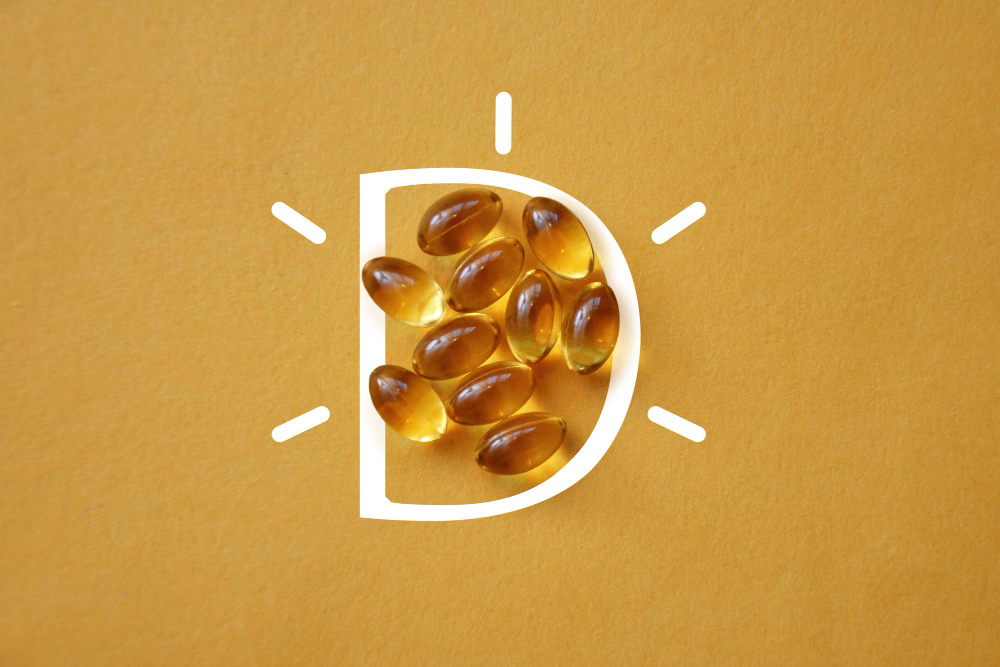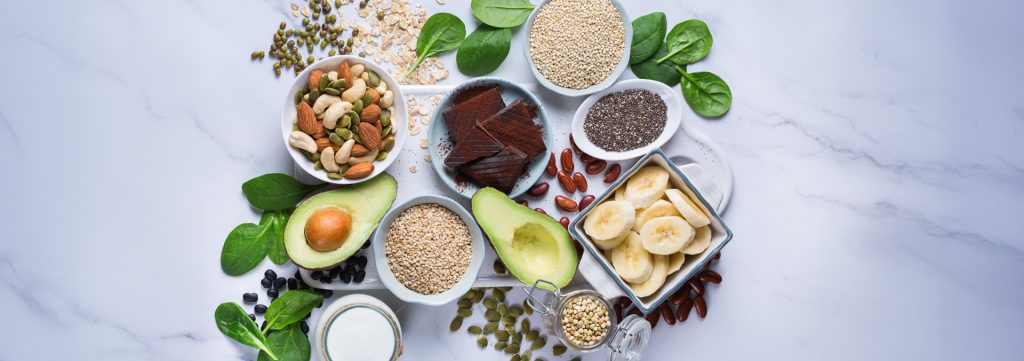All You Need to Know About Vitamin D

What is vitamin D?
Vitamin D is a steroid hormone, manufactured from cholesterol when our skin is exposed to UVB in direct sunlight. Since very few foods contain meaningful amounts of vitamin D, we are dependent on the sunlight to keep our natural vitamin D levels up. Vitamin D is fat-soluble and stored in our fatty tissues and liver, where stores can remain for two to three months.

Why do we need it?
Vitamin D works on multiple systems in the body, which is why deficiency symptoms can be so diverse. A lack of vitamin D has been linked to weaker bones and teeth but more recently research has associated low levels with cardiovascular disease, low mood, depression, autoimmune disorders, cancer, diabetes, inflammation, neurological disease and reduced immunity.
Vitamin D helps us to:
Absorb calcium – one of vitamin D’s main roles is for the correct absorption of calcium and phosphorus, which supports healthy bones, teeth and muscles. Insufficient vitamin D can make calcium absorption extremely challenging for the body.
Supports our immune system – some research has linked lower vitamin D levels with increased risk of contracting upper respiratory tract infections, such as colds and flu. Vitamin D helps to modulate the activity of immune cells, and may reduce the production of pro-inflammatory chemicals, such as cytokines. This activity may be important in a number of autoimmune diseases.
Mental health – vitamin D is thought to be neuroprotective and helps regulate normal brain development and function. We have vitamin D receptors on almost every cell in the body, including receptors in the cells of the pre-frontal cortex of the brain, an area of the brain which is critical for mood regulation.
Gut health—More recently vitamin D has been associated with gut integrity, overseeing cadherin junctions (ECJs) which form part of the intestinal barrier in the gut wall, these act as a form of border control, restricting the size of molecules that are able to cross from the gut into the bloodstream.
Are we deficient?
It is estimated that around 20% of the UK population has a deficiency in vitamin D (1), however the true number may be much higher if we include those with sub-optimal levels. Individuals most at risk include:
- Children
- Pregnant or breastfeeding women
- The elderly
- Those with darker skin tones
- Those who spend little time outdoors
- Those with a genetic predisposition to low vitamin D
- Those who cover their skin with clothing all year
Why are we often deficient in the UK?
Food sources aren’t enough – Natural food sources include oily fish, egg yolk, organ meats, cod-liver oil, full fat dairy and butter but these only provide minimal amounts of vitamin D (except cod liver oil). So, whilst some vitamin D comes through our diet, most is made by the skin through sunshine.
Our climate – In climates such as the UK, the natural sun rays are too weak between September and April to support optimal vitamin D production.
Do we all need the same amount of vitamin D?
Our cells carry vitamin D receptors called VDR-receptors. These receptors pick up the vitamin D from our bloodstream and allow it to enter our body cells. These receptors are influenced by our genetics, and it is believed that the genes governing our VDR receptors have a significant impact on our bone density. These genetic differences mean that some people may have a much higher requirement than others and may find that they need to supplement more to maintain healthy vitamin D levels in the blood.
Studies show our bone density is strongly correlated by our genetics and can therefore be hereditary.
Advice on supplementation
To answer the question “Should I be taking a vitamin D supplement?”, it seems sensible advice that everyone in the UK should be thinking about their vitamin D levels and considering supplementation.
In an ideal world, we would all know our vitamin D levels, which would give us a better idea of how much to supplement to keep blood levels within an optimal range. While we offer vitamin D testing in our nutrition clinics, many people do not have access to this testing, although there are a number of online clinics emerging, offering pin prick home test kits.
It’s personal – Supplementation is dependent on our current blood values and our age and needs to take into account total daily intake from food, as well as a combined amount from different vitamin and mineral supplements, which may all contain small amounts of vitamin D.
The recommendation – we are advised to take additional vitamin D in autumn and winter by NHS England (2); however, many medics are now recommending that vitamin D is taken all year round to ensure adequate levels. Currently it is recommended that children over the age of 1, adults and those pregnant or breastfeeding should take 400IUS (10mcg) from October to March with supplementation over the summer being optional. Due to genetic variations or darker skin tones, some people may benefit from supplementing all year round and some often require higher doses than this to keep blood levels optimal. Many supplements take this into account and offer between 1-2000IUs as a daily dose for adults and 1000IUS for children. The NHS states that the upper safe limit for vitamin D is 4000IUs daily for adults and no more than 2000IUs daily for children.
Types of vitamin D – the two types of vitamin D are vitamin D2 (ergocalciferol) and vitamin D3 (cholecalciferol). Vitamin D3 is only found in animal-sourced foods, whereas D2 mainly comes from plant sources and fortified foods. Evidence shows that D3 is more effective than D2 is raising blood vitamin levels. The liver metabolises vitamin D2 into 25-hydroxyvitamin D2 and vitamin D3 into 25-hydroxyvitamin D3, both known as calcifediol, the main circulating form of vitamin D. However, D2 appears to make less calcifediol than D3.
Supplement combinations – Many vitamin D supplements are combined with vitamin K2. These two vitamins work in tandem in the body. Vitamin D3 helps with the absorption of calcium and vitamin K2 acts like a signpost directing calcium to the bone matrix. Vitamin K2 activates osteocalcin, a protein that binds calcium to the bone matrix and also activates a protein called GLA that helps to move calcium away from the blood vessel lining (3). Some medications contraindicate with K2, such as blood thinning medication, so always check with your GP first.
Take with a fat to aid absorption – Vitamin D and K are fat soluble so try and take your supplement with a meal including a healthy fat such as an avocado, extra virgin olive oil, nuts, seeds, full fat dairy or oily fish, for optimal absorption. Some sprays can be absorbed through the cheeks or under the tongue which have a rich blood supply. Sprays should be taken without food.
My supplement recommendations
For reputable brands of vitamin D, feel free to look at my recommended brands under my affiliate shop at Healf. These are brand recommendations only that I might use in clinic. You must be responsible for any supplements you choose to take—general advice only.
Please check that these supplements are right for you or ask your GP for help as I cannot offer personal advice as per the terms and conditions of my business.
You can shop with 10% off at this site and see my top picks: Dominiques Shop
This is an affiliate account and commission may be earned on qualifying purchases.
References
1. https://vitall.co.uk/health-tests-blog/statistics-vitamin-mineral-deficiency-uk
2. https://www.nhs.uk/conditions/vitamins-and-minerals/vitamin-d/
3. https://pmc.ncbi.nlm.nih.gov/articles/PMC4566462/
DISCLAIMER:
Features published by Dominique Ludwig are not intended to treat, diagnose, cure or prevent any disease. Always seek the advice of your GP or another qualified healthcare provider for any questions you have regarding a medical condition, and before undertaking any diet, exercise or other health-related programme. Please refer to our Terms and Conditions and Medical Disclaimer for more information as well as our Website Terms and Conditions.


